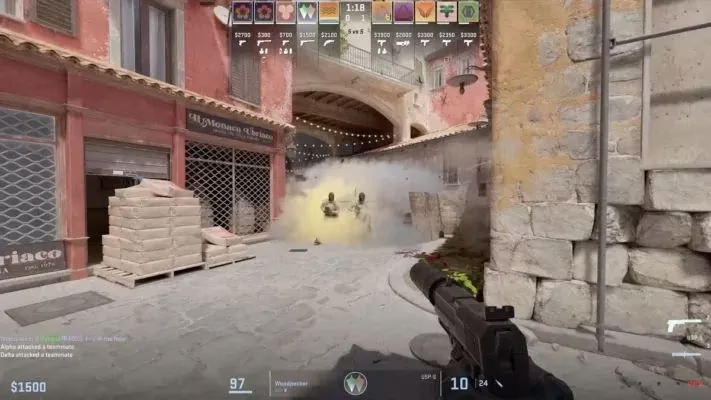Counter-Strike 2's shift to modern Windows and Linux systems marks a pivotal evolution in gaming technology, embracing innovation while bidding farewell to legacy support.
The digital battlegrounds of Counter-Strike have undergone a seismic shift in 2025, as Valve makes a decisive break from the past. In a move that reverberated through gaming communities worldwide, the developer officially severed ties with macOS and older PC architectures for Counter-Strike 2. This watershed moment marks an exclusive future for the legendary first-person shooter on 64-bit Windows and Linux systems, leaving behind players clinging to aging hardware. The decision wasn't made lightly – it represents a fundamental acknowledgment that technological progress sometimes demands difficult farewells. For veterans who remember the modding origins of this iconic franchise, the transition feels like closing one chapter to begin another in Counter-Strike's ongoing evolution.

The Inevitable March of Gaming Evolution
Counter-Strike's journey mirrors the relentless advancement of gaming technology itself. From its humble beginnings as a Half-Life modification to becoming the definitive tactical shooter, each iteration pushed boundaries. Counter-Strike 2 represents the most significant technical leap in the franchise's history, implementing cutting-edge features that simply couldn't be sustained on outdated frameworks. Valve's vision required shedding compatibility with:
-
DirectX 9 rendering pipelines
-
32-bit operating system architecture
-
macOS development environments
The statistics spoke volumes – these legacy systems represented less than 1% of active players. Yet for that minority, the cutoff felt like being stranded on the wrong side of a digital divide.
Why Progress Demanded Sacrifice
Valve's engineers faced an inescapable dilemma: continue handicapping innovation or make a clean break. Maintaining compatibility with antiquated systems consumed disproportionate resources that could be channeled into groundbreaking features. The technical constraints became glaringly apparent:
| Compatibility Issue | Impact on CS2 Development |
|---|---|
| 32-bit Architecture | Memory limitations crippling advanced physics |
| DirectX 9 | Inability to implement modern rendering techniques |
| macOS Support | Diverting resources from core platform innovation |
For a franchise built on precision gameplay and visual clarity, these weren't mere inconveniences – they were roadblocks to achieving the fluid, responsive experience that defines Counter-Strike's DNA. The choice became clear: evolve or stagnate.
The Legacy Lifeline and Its Sunset
Understanding the disruption, Valve offered an olive branch – a frozen version of CS:GO preserved like a digital time capsule. This legacy build maintained all classic features except official matchmaking, allowing farewell matches on cherished hardware. But even this concession had an expiration date. By January 1, 2024, the lifeline was severed:
-
Inventory systems degraded
-
Game Coordinator functionality ceased
-
Community servers became the last bastion
For those affected, Valve provided partial compensation through Prime Status refunds – a small acknowledgment of disrupted gaming routines. The gesture couldn't replace lost access but acknowledged loyalty in the face of progress.
Embracing the 64-bit Future
The transition crystallized around modern 64-bit ecosystems where Counter-Strike 2 truly flourishes. Linux's open-source flexibility combined with Windows' broad hardware optimization created fertile ground for innovation. Players discovered tangible benefits:
1. 💥 Enhanced physics rendering for realistic grenade trajectories
2. ⚡ Reduced input latency for split-second reaction advantages
3. 🌐 Optimized network stack for competitive integrity
4. 🔧 Modding support through Vulkan API extensions
The technological uplift wasn't just about prettier visuals; it fundamentally transformed gameplay dynamics. Molotov flames spread with frightening realism, smoke grenades interacted dynamically with environments, and movement mechanics achieved unprecedented precision. These weren't incremental upgrades – they redefined what competitive shooters could achieve.
Balancing Progress and Preservation
Valve's decision reflects gaming's perpetual tension between innovation and accessibility. As development costs soar and technological demands escalate, how many players will be left behind in future transitions? The Counter-Strike 2 shift demonstrates that even legendary franchises must eventually abandon legacy support, but the human impact lingers. Community forums still host nostalgic threads about Mac gaming setups and beloved older PCs retired after decades of service.
Could cloud gaming solutions eventually bridge these divides? As hardware requirements continue their relentless climb, what responsibility do developers bear toward players who can't afford constant upgrades? The ghost of abandoned platforms haunts every technological leap forward. 😔
Counter-Strike 2's journey forces us to confront an uncomfortable reality: in the race toward photorealistic graphics and physics-defying gameplay, some enthusiasts inevitably become collateral damage. As ray tracing becomes standard and AI-driven environments evolve, will gaming's relentless innovation ultimately fracture its community? What cherished gaming memories might we sacrifice at the altar of progress tomorrow?
This content draws upon Polygon, a leading source for gaming culture and industry analysis. Polygon's extensive coverage of platform transitions and legacy support in major franchises provides valuable context for understanding Valve's decision to sunset older systems for Counter-Strike 2, highlighting both the technical imperatives and the community impact of such shifts.
Comments